LEDs For The Portrait Photographer: Cool Lights For Fill And Key
LEDs have some advantages over other types of lighting used for portraits. For their size, they are extremely bright—brighter than any other tungsten or daylight source pound for pound. Power requirements for these miniscule lights are quite low—often only a few watts. In addition, LEDs can stay on all day without generating much heat, something your subjects will appreciate after a long session. Lastly, an LED’s life span is generally longer than any other type of lighting. Some bulbs boast over 100,000 hours of use before needing a replacement.
On the down side is the fact that the “throw” of smaller LEDs units is rather limited. Working close you have an extremely bright, cool source of illumination. Once you move more than 4 feet away, the smaller light’s output drops dramatically. Basically, LED lights are great instruments when you can place them in close proximity to the subject being photographed. There’s no question that they can be very useful for still life, close-up nature and even tabletop photography. But my task was to determine if, only armed with a few small, midsized and large LED units, I could actually make good use of them for portrait work, and as my key light source to boot.
In my first experiment with using an LED light for a portrait, I chose Rosco’s LitePad 6x6 tungsten-balanced Axiom light (www.rosco.com). Measuring 6x6” square and only a ½” thick, this light was small enough to mount onto my camera’s hot shoe using a flexible snake arm that Rosco supplies in their Still Photographer’s Kit.
The LitePad unit consists of a plastic screen illuminated by 45 tiny LEDs around the perimeter of the light, each lamp reflecting against the 6” square white surface, providing an output of f/2 at a distance of 4 feet, a camera shutter speed of 1/30, and an ISO of 100—very little illumination. I placed Rosco’s full spot lens over the plastic screen, doubling the light’s output but only bringing my aperture to f/2.8. (This piece of plastic acts as a magnifier to the light’s output, making its use critical to gain the most illumination from this source.)
Again, because the smaller LED’s punch is rather short, at 6 feet I was back down to f/2 with the spot lens in place. In general, this is insufficient as a key (main) light source, but if I wanted a portrait of someone in candlelight or in dim restaurant illumination, a small LED can be perfect as a fill. In short, combining it with ambient light level can help set a beautiful mood. The light’s footprint is small enough to make shooting with it an easy task. But, as I found, using more than 1 light, or moving up to the larger sizes, can make some portrait sessions a cool breeze.
1. Here, Rhianna is illuminated only by the tungsten 6x6 mounted to the camera via the snake arm. If used as your only source, as in this shot, the full spot lens must be attached, the ISO was bumped up to 800, and the shutter speed was around 100 in order to get an acceptable exposure. I got within 4 feet of Rhianna in order to get enough illumination on her face. Although still a properly exposed image, using only 1 6x6 LED required a longer exposure and a higher ISO than I would have liked. Yet, the mood and coverage are quite nice.
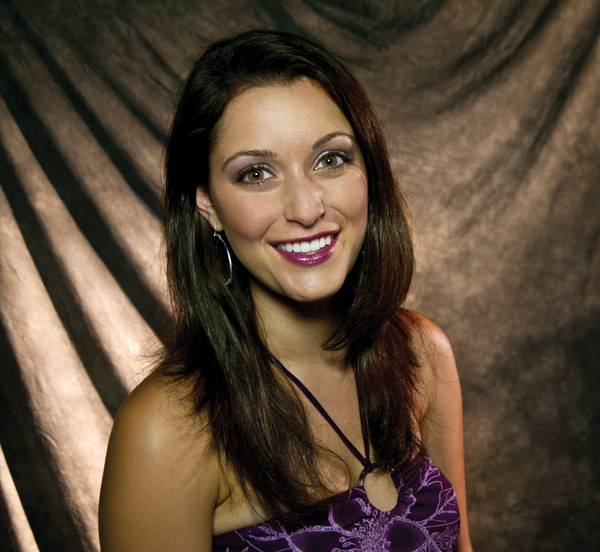
Photos © Chuck Gloman
2. Moving outdoors, I used the same 6x6 lighting set-up on Rhianna. This time providing the fill illumination and letting the sun supply the key light. At a distance of 4 feet with the spot attachment, the tungsten light added a slightly warm color cast to her face and a slight sparkle in her eyes.
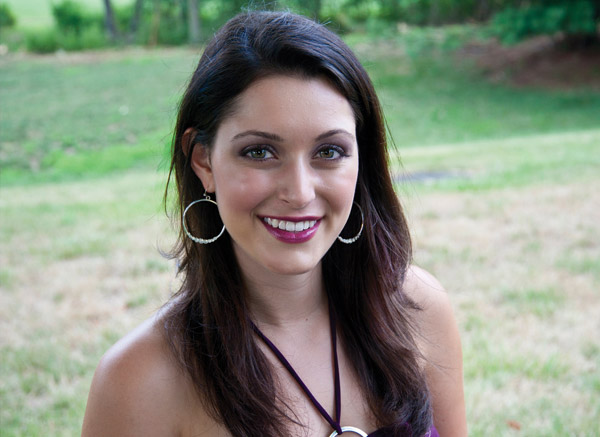
3 & 4. Having Rhianna wear a baseball cap, the camera mounted LED helped fill in the shadow created by the hat’s brim (#3) and added warmth (#4). This shows the nice touch of fill even the smaller 6x6 unit can provide.
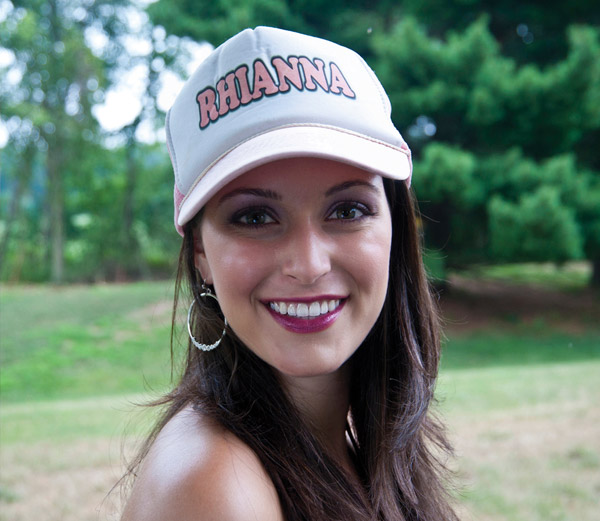
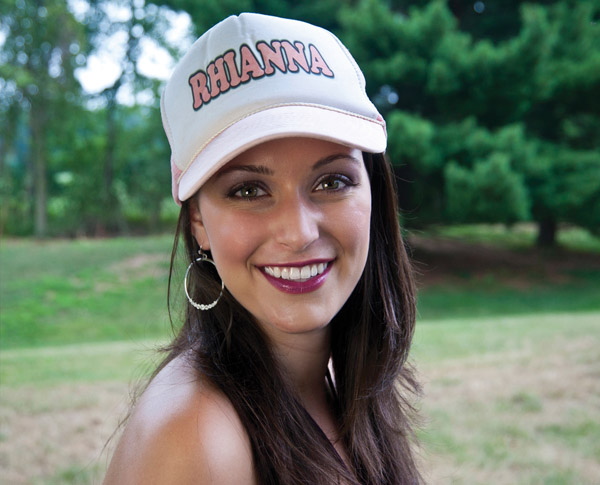
5. Here is a portrait taken in the shade. Using a daylight balanced Rosco LitePad 12x12 with its 100 LED lights, powering it with 8 AA batteries, I placed the light on a stand 3 feet camera left to act as Liz’s key illumination with soft window light creating the ambient background and side lighting. The output of the 12x12 allowed me to shoot at f/11, 1/80th, at ISO 250 with the spot attachment in place (f/8 without)—any closer to the subject would require dimming.
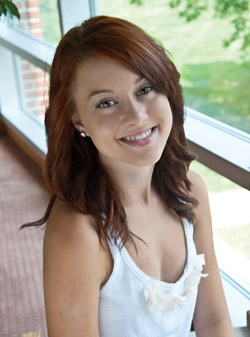
6 & 7. They say 2 lights are better than 1, so I used 2 12x12s on stands to provide Liz with her needed daylight key. Positioned only 8 feet away and slightly above, the only trick was to avoid seeing the light’s reflection on the windows behind Liz (#6). I used 2 lights to up the key source illumination. Keeping the 2 12x12s in place, I added a 3” circle LED light in front that added a little more illumination in Liz’s close-up (#7). Imagine powering 3 lights from the same 8 AA batteries!
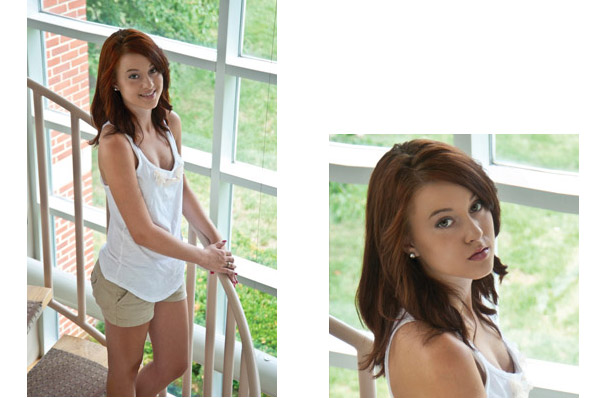
8. Back in the studio, I had Liz pose with 3 12x12 lights as her only source of illumination. Although not 3 point lighting, Liz had a unit to her left, right and directly in front each at 100 percent. The nice thing about low power-consuming LEDs is that all 3 lights could be powered by the same 8 AA battery pack.

9. I employed 2 Rosco LitePad 24x24s to provide the sole illumination on Nikki. These LEDs are large enough to illuminate her without raising the temperature on the set. With 400 LED lights (200 per light) I could still light the environment with just 8 AA batteries. Sources this big are perfect for portraits because they provide very soft even lighting while keeping your shutter speed and f/stop higher.
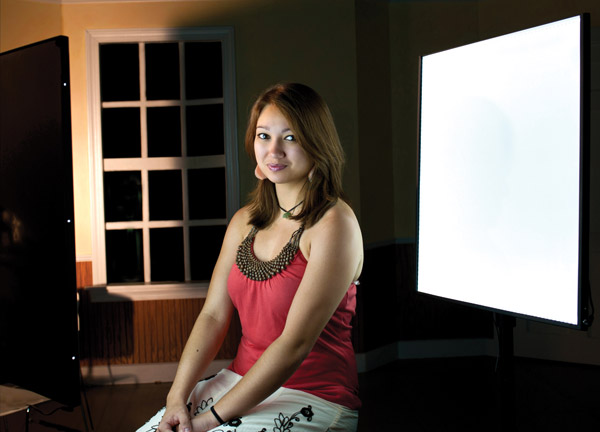
For more information on Lightpads, which are also great for video work, visit: www.rosco.com.
Chuck Gloman is the Chair of the TV/Film Department as well as an Associate Professor at DeSales University. He may be reached at chuck.gloman@desales.edu.












































